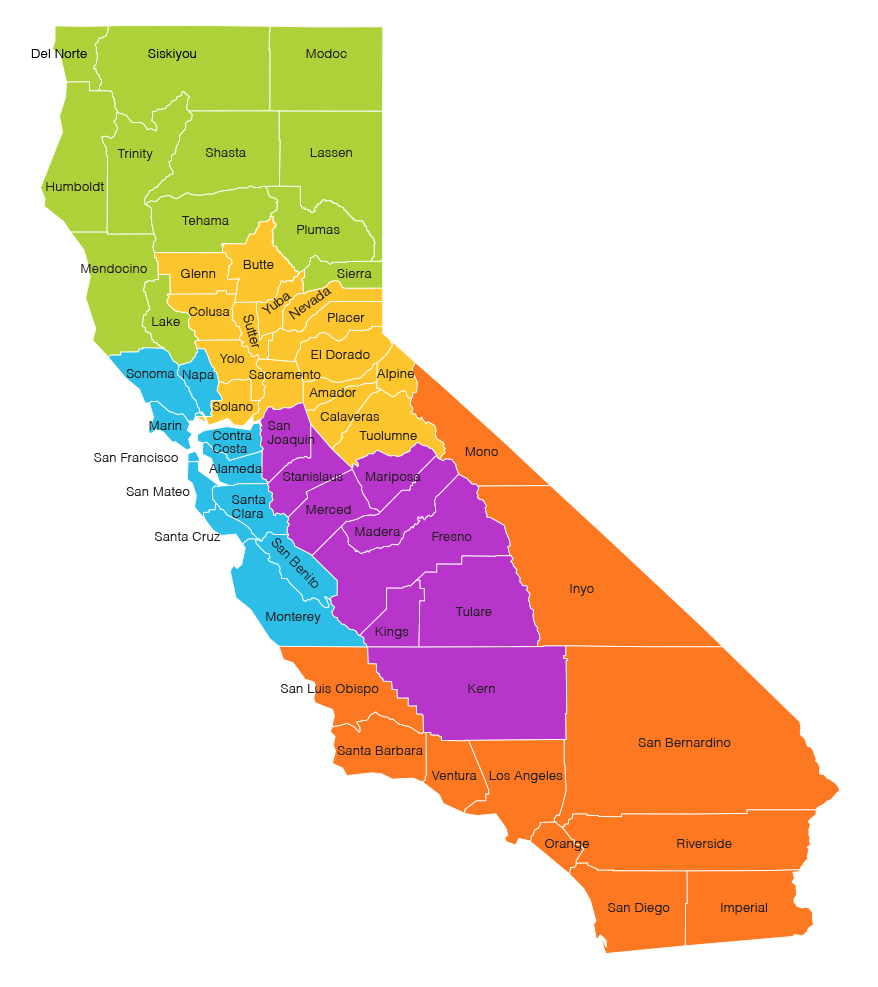
Have you ever wondered how many counties California actually has? You’re certainly not the only one. From trivia nights to travel planning, the magic figure 58 always surfaces, and still that single digit barely scratches the surface.
The Golden State’s 58 counties createa patchwork of contrasts: sun-drenched coastal hubs, pine-covered mountain regions, fruit-laden interior valleys, and global entertainment capitals. None of these counties lacks a unique backstory, moulded byimmigration waves, high-tech revolutions, and ever-changing demographics.
In the sections ahead, we’ll explorethe timeline that locked the total at 58, the real responsibilities counties shoulder, and the record-holders—from the tiniest to the most populous. Ultimately, you’ll have the numbers—and sound like a local expert with confidence.
Origins of California’s 58 Counties
When California joined the Union in 1850, the map looked nothing like today’s. An unprecedented population boom forced lawmakers to redraw borders. Before the century turned, the count had risen to over five dozen counties, and that same year the remaining gaps were closed, locking in the official total of fifty-eight.
Assembly journals reveal that fresh jurisdictions stemmed from three major pressures:
- Sheer distance left settlers days from the nearest courthouse.
- Economic clashes between miners and farmers sparked break-ups.
- Ethnic enclaves demanded tailored governance.
Within a single generation, the political map stabilised. Today, even bold secession schemes rarely get ballot traction, leaving historians to label the era when new counties sprouted truly closed.
A County-by-County Tour of Terrains
Stretch a string from the Smith River watershed to sun-baked Imperial touching Mexico, and you’ll thread through dozens of ecosystems. Coastal counties enjoy Mediterranean precipitation, while great agricultural belts record triple-digit heat.
- Sierra jurisdictions such as Mono, Mariposa, and Calaveras store California’s snowpack.
- River-delta territories fight subsidence but export produce worldwide.
- Channel-coast administrators like Los Angeles oversee ferry routes.
This breadth clarifies why no two counties share identical economies. Weather sets tax bases and lifestyles.
What Counties Actually Do
Within the state’s tiered system, municipalities handle zoning, but counties shoulder crucial baseline services that keep daily life humming. From birth to death—vital records, coroner reports, property deeds—all reside at the registrar of voters.
Elected sheriffs patrol unincorporated land, while trial courts hear civil suits. Public-health branches administer vaccination campaigns. Funding debates occur in monthly Board of Supervisors sessions.
Case Study: Tiny Alpine County
Tiny Alpine operates from a single two-story courthouse, highlighting how adaptable the system is. One template doesn’t fit all when populations range from under 1 200 to over 10 million.
In the end, these 58 mini-capitols bridge Sacramento’s big laws and local reality. Grasping their portfolio guides newcomers navigating paperwork.
Population, Economy, and Record-Holding Counties
California houses over thirty-nine million people, but that population collects in dramatic clumps. LA County by itself hosts more than one resident in four. Conversely, high-elevation Alpine could fit its voters into a high-school gym.
- Most populous: Los Angeles
- Smallest by residents: Alpine
- Widest landmass: San Bernardino
- Smallest area: San Francisco
Economically, the disparities are just as sharp. Tech-centric jurisdictions see venture cash flow in at record rates, while Central Valley breadbaskets number of counties in california depend on seasonal labour influxes. These fiscal contrasts informs legislative redistricting every decade.
Tracking each superlative pays dividends: tax rates, job prospects, and lifestyle perks hinge on county lines.
The Ultimate California County Circuit
County-collecting hobbyists, setting foot in each CA county has become a badge. A popular itinerary sets out in San Diego, heads north along Highway 1, swings through Santa Cruz, then zigzags across the Central Valley’s orchard belt, before climbing into the high Sierra for old stamp mills.
Three-Day County Clusters
- Southern Swing – Mission trail coast; a baker’s dozen of stops in a long weekend of days.
- Valley Ribbon – Grapes to rice paddies; eight hours of orchards.
- Northern Peaks – evergreen corridors; fire-lookout hikes.
Cap off the circuit in the desert southeast, with quadruple-digit odometer gains. At that point, you can brag that you’ve lived the answer to the county-count question—because your copyright stamps prove it!
California County FAQ
Wondering how the county system works? Start with these quick answers.
What is the total number of counties in CA?
State records confirm 58 counties—a total locked in for over a century. Regardless of the source—be it Sacramento archives or federal census data: precisely fifty-eight.
Where do the most Californians live?
LA County leads by a wide margin, home to over 10 million residents. Decades of immigration, entertainment dominance, and job growth keep the numbers high.
Which CA county has the fewest residents?
The crown for smallest population goes to Alpine County, with fewer than 1 200 inhabitants. Location along rugged mountain corridors keeps growth modest, making it a haven for solitude seekers.
Largest county by land size?
San Bernardino County spans the most ground encompassing deserts, mountains, and metro suburbs alike. Its sheer scale means climate zones shift from alpine snow to Mojave heat within county lines.
Why does California have exactly 58 counties?
Early statehood growth pressures split larger districts into smaller units, with the final adjustments ratified in 1907. Every modern effort to create a new county stalls in committee or dies at the ballot box.
Is it possible to form a 59th county?
Technically, the California Constitution leaves the door open, though the process is arduous. A break-off region must gather local signatures, win a majority vote in each affected county, and secure legislative approval. Consequently, boundaries have frozen for over a century.
What services do California counties provide to residents?
Counties handle the backbone of local governance: foster care, libraries, building permits, and superior courts. Remove counties from the equation, and civil society would struggle to operate.